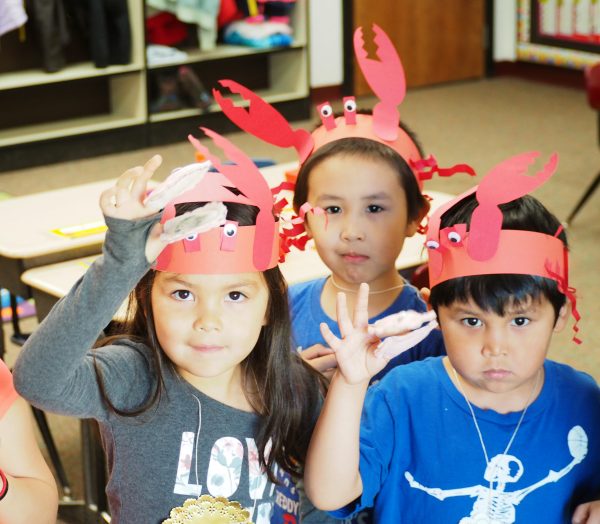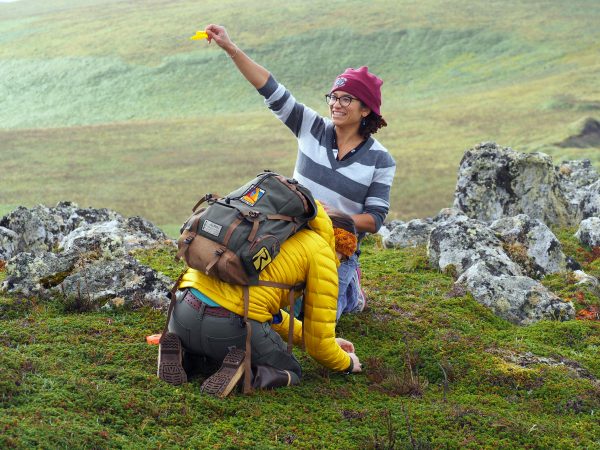Youths experience hands-on science at Bering Sea Days
October 12, 2018
Heather Rebekah McFarland
9074746286

“I’m a food chain,” yelled an enthusiastic 6-year-old. With her handmade red king crab crown, scallop finger puppet, phytoplankton sparkles and sun necklace, this young learner transformed into an ocean food chain. When asked who’s at the top of the food chain, she responded, “kindergarteners from St. Paul Island, Alaska.”
This was just one of many hands-on science activities that took place at St. Paul School last month during Bering Sea Days. The annual weeklong program is hosted by the Aleut Community of St. Paul Island Tribal Government. Over 20 scientists, journalists and policy experts traveled to the remote Pribilof Islands to give K-12 students an opportunity to learn about local science and careers.
Several International Arctic Research Center groups participated this year. Science communications lead, Heather McFarland, led the food chain activity which was part of her oceanography unit.
“All my activities were placed in the context of the Bering Sea, which is changing,” McFarland said.
Scientists are finding that the pH is decreasing in Alaska’s oceans. This reduces the carbonate ions that crabs, mussels and other marine organisms need to build and maintain their shells. Known as ocean acidification, this disruption to the ocean food web could have huge implications, especially to the Pribilof Islands students and their families who rely on the ocean for their food and livelihood.
During Bering Sea Days, students learned new ways to communicate these changes. Combining science, storytelling and art, the students created ocean acidification comics.
“This activity gave students a fun tool to share ocean acidification issues with friends and family. Even young kids can be a voice for science,” McFarland said.

Jasmine Shaw, program coordinator for the Sitka Outreach Center of the UAF Cooperative Extension Service, was at Bering Sea Days talking about another changing feature of St. Paul — its berries. Shaw is part of Winterberry, a citizen scientist project studying the impact of shifting seasons on Alaska berries. The topic is important to Saint Paul residents.
“The main berry species here is mossberry known as crowberry, and they are disappearing,” Shaw said.
She checked a dozen patches across the island, and only one had berries this year. These changes make Shaw’s research very relevant to people’s lives.
“I want to study berries, and people want to talk about them and why they are disappearing,” Shaw said. At Bering Sea Days, the students learned how to monitor the berry patch Shaw found, recorded stories for an interactive 360 storytelling map, made delicious berry foods and talked about potential solutions for a low-berry future, such as trading with other communities.
For Shaw and McFarland, Bering Sea Days is a way to inspire students.
“As youth, it is good to be exposed to a lot of different things and see the possibilities that are out there,” explained Shaw.
In January, a St. Paul high schooler is headed to University of Alaska Southeast to become a marine biologist, and another wants to become a landscape architect — all because they were exposed to those careers at Bering Sea Days.
Heather McFarland’s travel to Bering Sea Days was paid for by National Science Foundation grant OPP 1603116.


